Reentry
Reentry refers to the transition of offenders from prisons or jails back into the community. Studies show the chances of recidivism are much higher when an offender does not have transitional support. Reentry information is not only crucial for the individual but the community they return to as well.
Recommended Books
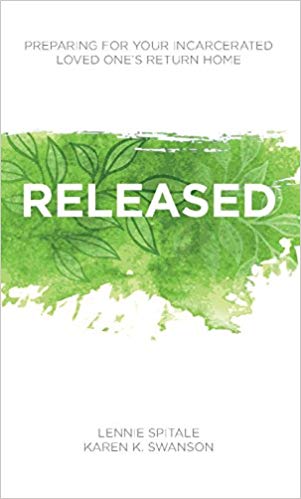
It’s a process, and it will take time for your loved one to decompress from the routine of prison and navigate the new normal outside the cell. But there is hope and healing for your relationship as you rebuild your life together. Released offers practical steps to help you and your loved with the challenges you may face—from finding employment to learning to trust again.
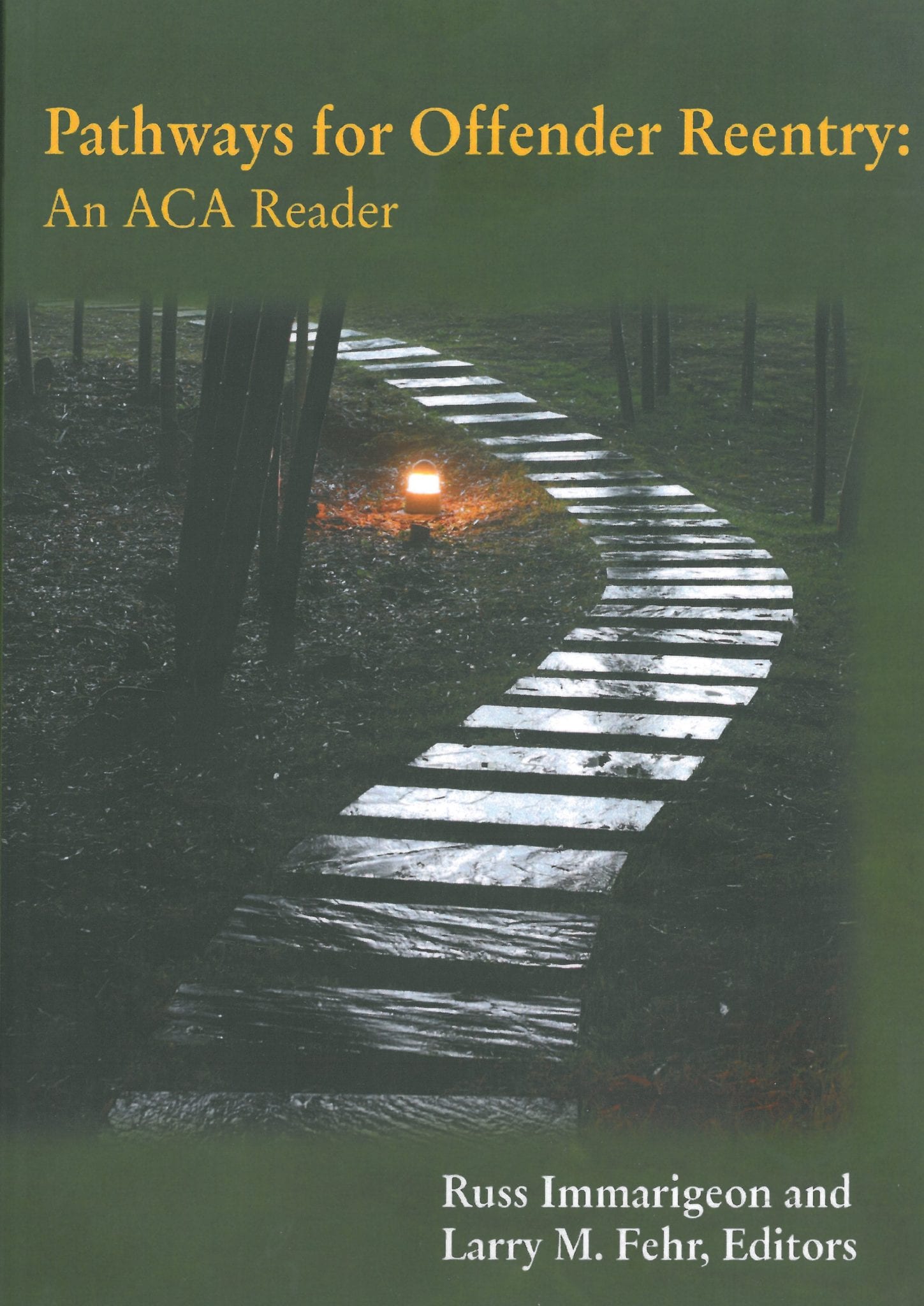
The book is comprised of collected works on prisoner reentry organized into sections that provide general information on what reentry entails, collaborative efforts to build reentry efforts, successful reentry undertakings, and factors proven to be effective in prisoner reentry.
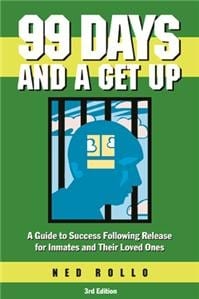
The most widely used release preparation handbook – the book no inmate should leave prison without. Focuses on the key psycho-social adjustments required to make a successful transition from prison to the free world. Candid but compassionate, this handbook leads offenders and their loved ones through the turbulent period before and after release, helping establish a sense of perspective and control, thus reducing stress and fear.
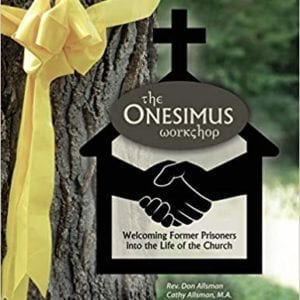 The purpose of the Onesimus Workshop is to orient churches to the process of welcoming former prisoners into the life of their church for building up the body of Christ. The Onesimus Workshop incorporates a wealth of knowledge and wisdom to those churches who wish to help the formerly incarcerated make the transition back to life outside prison walls and to incorporate them into their church body, providing them a healthy place to continue their walk with and service to the Lord.
The purpose of the Onesimus Workshop is to orient churches to the process of welcoming former prisoners into the life of their church for building up the body of Christ. The Onesimus Workshop incorporates a wealth of knowledge and wisdom to those churches who wish to help the formerly incarcerated make the transition back to life outside prison walls and to incorporate them into their church body, providing them a healthy place to continue their walk with and service to the Lord.
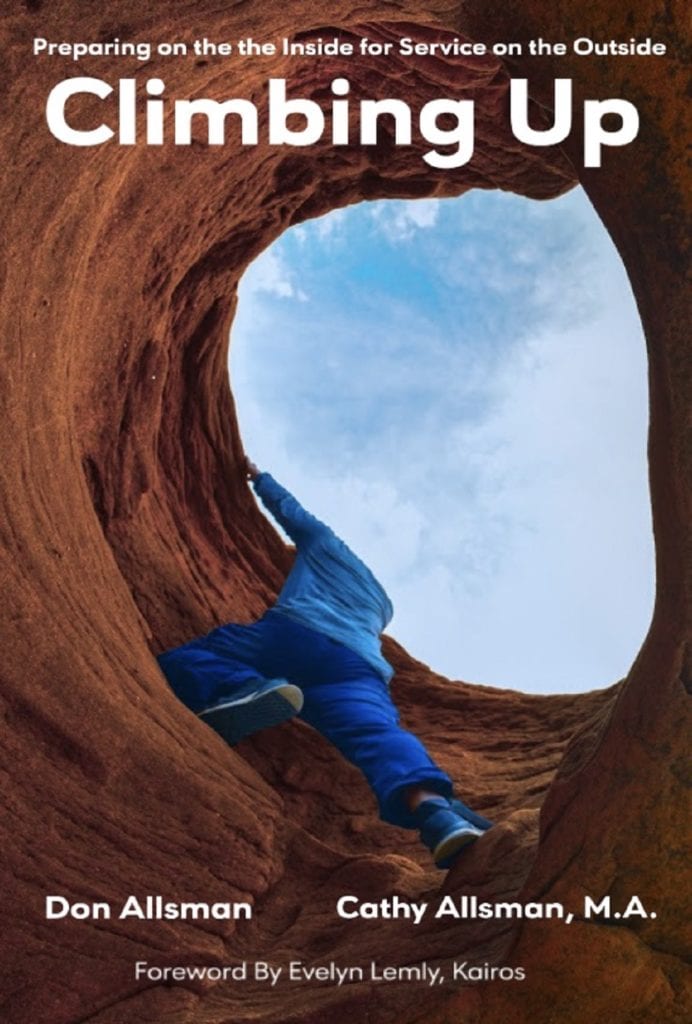 Climbing Up offers practical instruction for those who want to be fruitful for the Kingdom on the outside. It also offers instruction for friends and family members who desire to be a source of encouragement for those going through the re-entry process.
Climbing Up offers practical instruction for those who want to be fruitful for the Kingdom on the outside. It also offers instruction for friends and family members who desire to be a source of encouragement for those going through the re-entry process.
Employment
Resetting the Record: The Facts on Hiring People with Criminal Histories
This study by RAND Corporation indicates: “More than 25% of workers in the active workforce have at least one prior conviction. The evidence is overwhelming: People with conviction records can be (and are) successful employees.”
Education and Career Guide after Incarceration
Employment of Persons Released from Federal Prison in 2010
This report by the U.S. Department of Justice Bureau of Justice Statistics studied individuals released from the Federal Bureau of Prisons in 2010 and tracked the employment percentage of those in the study.
The Education & Career Guide for Formerly Incarcerated Individuals offers in-depth information in several areas, including: Information on different re-entry assistance programs, getting your GED after incarceration, financial aid & scholarships for previously incarcerated individuals, finding employment after incarceration
Best and Promising Practices in Integrating Reentry and Employment.
This webinar is based on lessons from integrating reentry and employment interventions to help people returning home after incarceration find and keep employment.
Employment Information Handbook
This handbook provides prisoners with contacts and other information that can help them to prepare for release.
Get the Facts: Dispelling the Myths about Ex-Offenders
“Regardless of your workplace setting, you will probably encounter someone with a criminal record. Workforce development professionals need the facts about strategies and services that help to reduce the barriers to employment and support services faced by their clients with criminal records…”
Cities Pave the Way: Promising Reentry Policies that Promote Local Hiring of People with Criminal Records.
Individuals involved with helping ex-offenders find employment after their release from incarceration will find this guide very interesting. It “assembles the most promising local policies that promote the hiring of people with criminal records.”
Why Work is Important, an How to Improve the Effectiveness of correctional Reentry Programs that Target Employment.
Latessa discusses the importane of employment and the effectiveness of correctional reentry programs that target employment. First, work and employment is important for reentry and they should not ignore it simply because most studies have not shown emploument programs to reduce recidivism.
Industry Recognized Certification: A Pathway to Reentry
The use of industry-based certification to increase the likelihood that ex-offenders will succeed in finding jobs is explained. Certification plays a vital role because the “reentry success of inmates requires that they develop skills consistent with industry standards and that they obtain recognized and marketable certificaiton, which employers often use as one important criterion for hiring.”
Which Components of Transitional Jobs Programs Work Best? Analysis of Programs for Former Prisoners in the Transitional Jobs Reentry Demonstration
An evaluation of the Transitional Jobs Reentry Demonstration (TJRD) was implements in order to discover which components of the TJRD positively impact outcomes.
Families
Family engagement in Reentry for Justice-Involved Youth
On October 4, 2010, the National Reentry Resource Center and the Center for the Advancement of Mentoring hosted a webinar on engaging family members in reentry efforts and identifying pro-social support for youth involved in the juvenile justice system.
Engaging Fathers for Successful Reentry: Research, Tips, Best Practices
A selection of fact sheets “connect the dots between eight of the most significant reentry challenges and the need to engage incarcerated and reentering fathers in becoming better dads” (p.3). This report covers housing, employment, marriage and relationships, substance abuse, mentoring and community support, child support, involving moms, and domestic violence.
Best Practices Tool-Kit: Family Involvement during Incarceration and Reentry
Aims to identify empirical evidence regarding strategies, programs and practices geared toward family involvement during incarceration and reentry. Topics include family of the incarcerated, families and reentry, maintaining and facilitating familial involvement, and exemplary programs.
Close to Home: Building on Family support for People Leaving Jail
This report describes the Family Justice Program’s Close to Home project, which implemented the Relational Inquiry Tool (RIT) – a series of questions originally designed for and tested in prisons to stimulate incarcerated people’s thinking about supportive family members as a resource – in three jails in MAryland and Wisconsin. This report also discusses the results from qualitative and quantitative research at the three facilities, aimed at gauging the attitudes of jail staff, incarcerated men and women, and family members toward the RIT.
Housing
Building Connections to Housing During Reentry
The Council of State Governments Justice Center conducted a questionnaire among DOC reentry coordinators in spring 2022 on behalf of the U.S Department of Justice’s Office of Justice Programs’ Bureau of Justice Assistance (BJA) and the U.S. Department of Housing and Urban Development (HUD). Thirty-seven out of 50 states plus the District of Columbia responded to the survey. This report summarizes the key findings and policy implications of the questionnaire related to screening and assessment, release policies, cross-system partnerships, housing programs provided and funded by DOCs, and reentry housing gaps and needs.
Between the Lines: A Question & Answer Guide on Legal Issues in Supportive Housing: 2010 National Edition
Between the Lines offers information about the laws and regulations that govern supportive housing, and attempts to provide assistance in furthering the CSH goal of creating stable housing for homeless individuals and families. However, the Guide is not intended to solve specific legal situations that would require counsel, to provide legal advice, or to substitute for the assistance of an attorney. Readers should consult legal counsel and local government representatives for answers to and advice on specific legal concerns.
In Our Backyard: Overcoming Community Resistance to Reentry Housing (A NIMBY Toolkit)
With over 725,000 men and women being released from prison each year, the need for housing assistance for the formerly incarcerated population is immense. Indeed, in addition to linking homelessness and incarceration, research has identified a significant relationship between homelessness and re-offending. Unfortunately, a number of barriers place the formerly incarcerated population at a disadvantage when trying to access safe and stable housing.
Housing as a Platform for Formerly Incarcerated Persons
The fourfold increase in incarceration rates in the United States over the past two decades has had sweeping consequences. Perhaps chief among them is the volume of men and women released from incarceration to the community annually and the attendant social and fiscal costs associated with their return.
Reentry Housing Options: The Policymakers’ Guide
This guide provides practical steps that lawmakers and others can take to increase public safety through better access to affordable housing for individuals released to the community. The guide provides an overview of several commonly accessed housing options and their benefits and limitations
Enhancing Rural Reentry Through Housing Partnerships: A Handbook for Community Corrections
Family Justice initiated the project “Housing Partnerships to Enhance Reentry Outcomes” in response to rural community corrections officers grappling with housing families involved in the
criminal justice system. Time and again community corrections officers cited the same challenges.
Mental Health/Substance Use
Five Things About Substance Use Interventions
This article put out by the US Department of Justice/National Institute of Justice outlines five statements regarding interventions based on practices rated by CrimeSolutions (CrimeSolutions helps practitioners and policymakers understand what works in justice-related programs and practices).
Adults with Behavioral Health Needs under Correctional Supervision: A Shared Framework for reducing Recidivism and Promoting Recovery
The council of State Governments has developed a guide for coordinating efforts to assist mentally ill and drug addicted adults, with the goal of providing effective treatments and stopping their cycling back through the system.
Interventions to Promote Successful Re-Entry among Drug-Abusing Parolees and Response: Pathways to Recovery and Reintegration
Reviews research findings on principles of effective correctional treatment and the interventions that have been shown to be effective with drug abusing parolees or that have been tested with general drug-abusing populations and shown promise for use with parolees
Guidelines for Successful Transition of People with Mental or Substance Use Disorders from Jail and Prison: Implementation Guide
The purpose of Guidelines for Successful Transition of People with Mental and Substance Use Disorders from Jail and Prison: Implementation Guide is to provide behavioral health,
correctional, and community stakeholders with examples of the implementation of successful strategies for transitioning people with mental or substance use disorders from institutional
correctional settings into the community
SAMHSA Anger Management for Substance Abuse
This workbook is designed to be used by participants in an anger management group treatment curriculum for substance abuse and mental health clients. It provides individuals participating in the 12-week anger management group treatment with a summary of core concepts,worksheets to complete homework assignments, and space to take notes for each of the sessions.
Programming
Reentry–Special Feature
This special feature on Reentry by the US Department of Justice provides links to important training, funding information, second chance information, reentry programming, toolkits, and other important resources for Reentry.
Measuring and Assessing Recidivism
This resource put out by RTI International and the Center for Court Innovation describes considerations related to using recidivism as a core outcome in reentry program evaluations.
States Report Parole Policy Transformations
This article put out by the Justice Reinvestment Initiative highlights some of the changes states make in parole policy since the spring of 2020/Covid-19 pandemic. In 2020, many parole authorities responded to state efforts to reduce prison populations and adjusted to working remotely and the normal challenges of their roles intensified
Planning a Reentry Program: Toolkit for Tribal Communities
This toolkit put out by the U.S. Department of Justice Bureau of Justice Assistance is designed to assist tribal justice system practitioners to create or enhance reentry programs for American Indians and Alaska natives returning from jail or prison.
Reentry in the Wake of COVID-19
The survey builds upon a CSG Justice Center survey issued in April 2020 to learn how the pandemic was impacting reentry service providers and the people they serve. These new results provide an updated snapshot of how service providers have adapted, where they continue to need support, and what new concerns have emerged as the field evolves more than a year after the pandemic began.
Your Money, Your Goals – Focus on Reentry
The toolkit by the Consumer Financial Protection Bureau has information that helps you have money conversations with the people you serve. Use the tools to help achieve goals and work through challenges
Cultural Responsive Evaluation Brief This resource brief is part of a three-part series intended to assist reentry programs that are interested in applying a racial equity lens to their research and evaluation activities. Effective programs must be culturally responsive to their clients, considering characteristics such as race, ethnicity, nationality, religion, gender identity, and other factors that may collectively shape clients’ service needs and reentry experiences.
Mentoring Formerly Incarcerated Adults
In the United States, more than 650,000 prisoners are released from incarceration each year (Harrison, Beck 2006). Finding ways to support those former prisoners after their release is key to
ensuring their successful transition back into society.
Mentoring as a Component of Reentry
The impact of mentoring for adults returning to their communities from incarceration is dependent on how well reentry programs structure the mentoring component of the program, which involves collaborating with correctional facilities, thoughtfully selecting and matching mentors and participants, and effectively concluding the mentoring relationship. An
integral part of the process also involves the understanding that mentoring should serve as a supplement to services that address other critical reentry needs, such as housing, health care, substance use treatment, and employment.
The First 72 Hours of ReEntry: Seizing the Moment of Release
The premise of the September meeting of the 2008 Stanford Executive Sessions on Sentencing and Corrections was that the 72-hour period immediately following release fromprison is a crucial focus for policymakers.
Reentry: Dynamic Risk Assessment
Much research has gone into the prediction of criminal and violent behavior. The majority of studies in this area of risk assessment have focused on risk factors that are defined through preincarceration behavior and background. With little exception, these historical risk factors are rated by a professional based upon interview and file review. Considerable time can elapse
between initial incarceration and release and therefore the risk factors central to the risk assessment process represent old, albeit important information.
Prisoner Reentry Resource Manual
The ReEntry Manual includes nine Steps to successful reentry, and is designed to function as both a teacher’s guide and inmate workbook, with space to take notes, checklists to gauge
reentry readiness and worksheets to create resumes, budgets and spending logs. Objectives are listed at the beginning of each Step, followed by a simple, step by step process for meeting them.
2015 Reentry Skills Building Handbook
While specifically designed for Georgia, this handbook’s format is a great example of an offender reentry handbook. It is based upon the Template from the Minnesota Department of Corrections. Sections following a “GDC Offender Reentry Model” flowchart include: introduction—getting organized; identification; housing; employment; careers; programs inside GDC; work ethics; transportation; money management; education; incarcerated veterans program; selective service; applying for Social Security; health and life skills; mental health services; alcohol, other drugs (AOD), and recovery; family and friend relationships; child support; living under supervision; and Georgia specific community resource contact information.
Thinking for a Change: Integrated Cognitive Behavior Change Program
Thinking for a Change (T4C) is the innovative, evidence-based cognitive behavioral curriculum from the National Institute of Corrections (NIC) that has broadly influenced the correctional field and the way correctional facilitators work with offenders and inmates.
Women
Women Offender Transition and Reentry: Gender Responsive Approaches to Transitioning Women Offenders from Prison to the Community
The current policy focus on prisoner reentry or, more broadly, the transition process by which incarcerated individuals are prepared to return to the community from prison and
are supported in doing so, represents a crossroads in the field of corrections. No longer responsible solely for monitoring and surveillance, or for the safety and security of incarcerated individuals, corrections professionals are increasingly being asked to take on the challenge and responsibility of promoting offender success as a means of achieving greater public safety.
A Practitioner’s “Blueprint” for Replication
Designed to share the lessons learned from WOmen Offender Reentry Collaborative, including organizations that are already serving similar populations and tose considering expanding or modifying services.
Women Offender Case Management Model
The gender-responsive Women Offender Case Management Model (WOCMM) is described. This document covers: the history of the project; philosophy and core practices; process incorporating four core elements (e.g., engage and assess, enhance motivation, implement the case plan, and review progress); preparing for implementation; and evaluation.
People, Places, and Things: The Social Process of Reentry for Female Ex-Offenders
The primary goal of this study is to learn about the complex social lives of female ex-offenders and how their release from prison impacts is impacted by their relationships. The main area of interest is how various groups impacted – offenders, their employers or potential employers, landlords, friends and family, acquaintances — the process of inmate reentry.
Youth
Reentry Starts Here: A Guide for Youth in Long-Term Juvenile Corrections and Treatment Programs This toolkit was developed by the Office of Juvenile Justice and Delinquency Prevention as a resource to help young people in juvenile corrections and treatment programs prepare for reentry and success in the community.
Desktop Guide to Reentry for Juvenile Confinement Facilities
The goal of the DGR is to expand the juvenile justice discussion about juvenile reentry, particularly the need for confinement facilities to change the way they do business and include a reentry focus. Fully embracing reentry means a change in the traditional ways of juvenile offender incarceration.
Critical Elements of Re-Entry/Continuing Care Systems [Participants Manual]
“Using a three-phase process [during this 36-hour course] to plan, create, and evaluate reentry/continuing care systems, participant teams plan ways to help juvenile offenders from their jurisdictions successfully transition from institutional settings back into the community.”
From Corrections to Community: The Juvenile Reentry Experience as Characterized by Multiple Systems Involvement. Final Report.
In this study, we examined reentry experiences of a population of youth released from Illinois juvenile correctional facilities between 1996 and 2003. Prior research suggests that these youth are likely to face considerable challenges as they navigate the transition back into the community. The needs of these youth may place them in contact with one or several childserving systems, which may indicate both need and support received during the transition.
Educational Aftercare & Reintegration Toolkit for Juvenile Justice Professionals: A Toolkit for Juvenile Justice Professionals in Pennsylvania
in 2005-2006, juvenile justice professionals in Pennsylvania’s 67 counties were assessed to determine their current aftercare practices. As a result of this assessment, this Toolkit was written in 2006 to address one of their main areas of concern: helping youth returning from placement reintegrate back into school.
Exclusive Members Content
CMCA members have exclusive access to content such as:
- Anger Management
- Anger Management Changed for Good: Student Guide
- Collateral Consequences June 2019
- Enhancing Rural Reentry Through Housing Partnerships
- From the Classroom to the Community: Exploring the Role of Education during Incarceration and Reentry
- Intro to Board Policies Manual
- Keys to Federal Benefits Access
- Life After Lockup: Improving Reentry from Jail to the Community
- Managing the Challenges of Sex Offender Reentry
- Partnering With Jails to Improve Reentry: A Guidebook for Community-Based Programs
- Reentry 2015 Issues–Future
- Reentry Matters: Second Chance Act 10th Anniversary Edition
- Reentry Mythbusters
- Reentry Report Alaska
- Reentry Skills Building Handbook
- Reentry TIP SHEETS for Women
- Strategies for Creating Offender Reentry Programs in Indian Country
- Treatment and Reentry Practices for Sex Offenders: A States Overview
- Your Money Your Goals
